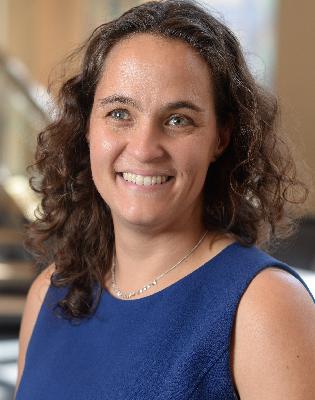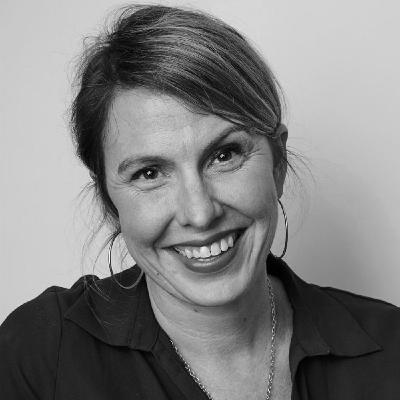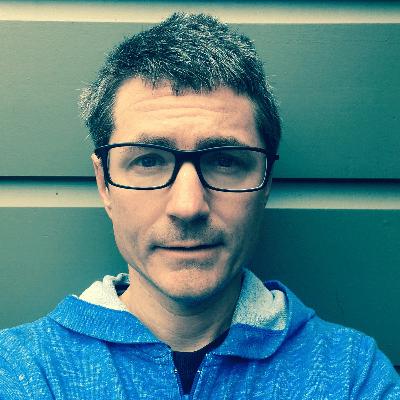54: At the Intersection of Design and Business, Be The Anomaly (ft. Roger Martin)
Description
Transcript
Jesse: I’m Jesse James Garrett,
Peter: and I’m Peter Merholz.
Jesse: And we’re finding our way,
Peter: Navigating the opportunities
Jesse: and challenges
Peter: of design and design leadership,
Jesse: Welcome to the next phase. Joining us today to talk about what’s next for design is business strategist Roger L. Martin, former Dean of the University of Toronto’s Rotman School of Management, who advanced the conversation about design and business with his influential work in the late 2000s.
We’ll talk about the parts of that vision that worked out as well as the parts that didn’t, the new forces shaping design’s business impact, and what design leaders should be advocating for next from Aristotle to Hermes. Here’s our wide-ranging conversation with Roger Martin.
Peter: Hello, Roger. Thank you for joining us today. For our podcast listeners who might not be familiar with you, how do you introduce yourself and what are you up to of late?
Roger: Ah, that’s a good question. Well, I guess I’m a writer, an advisor on topics of business, mainly strategy, innovation.
And I’m mainly an advisor, to mainly CEOs, and writer. And I kind of split my time fairly evenly between those two things. I was an academic for a while in the middle of my career. But what I like most is helping people solve problems that they don’t have a way of thinking about.
That would be the way would describe my goal in life. If there’s some problem or issue where you’re saying, man, I don’t even know how to think about this. I try to provide ways of thinking about that.
Peter: Jesse and I would have become familiar with you sometime in the mid-2000s when we were running Adaptive Path and you were one of the few business school people talking about the intersection of design and business, which was something we were interested in. We’d actually hired in 2005, a gentleman named Brandon Schauer from the Institute of Design, who actually had both an MBA and an MFA.
So that intersection was something we pursued. In fact, earlier in 2002 or 2003, we did research with Sara Beckman at UC Berkeley.
Roger: I love Sara.
Peter: So we were familiar with you from afar. So it’s great getting a chance to talk to you today. I’m curious, over these last 20 years, and where you land today in terms of your relationship with design and how you think of whatever the conversation is around the intersection of design and business.
Roger: Yeah, I, I’ve probably in some ways, even though it might not feel explicitly this way to folks watching, because I wrote more specifically on design in the late 2000s and then the next decade, like I had my book design of business was 2009, but my dive into design, I would argue, has deeply influenced my way of approaching business problems in general.
Learning from Aristotle
Roger: So even though I’m writing less about design, design, design those principles are there. And I would say it comes up particularly in my view of Aristotle, and the super important distinction he made that’s ignored by almost everybody on the face of the planet and certainly at educational institutions where he said, yes, I created this scientific method. He is the world’s first scientists. And he said, here’s how you be scientific: book, Analytica Posteriora, one of the most important books in an entire history of science, if not the most important book. And the world has become ever more scientific, all sorts of disciplines like the, my undergrad discipline was economics and it’s become highly scientific and quantitative and analytical.
But all of those people, in the entire world of economics, in the entire world of business, ignored what the father of science said, and he said, you should only use my method in the part of the world where things cannot be other than they are. Well, what part of the world would that be? Well, it’s the part of the world where I’ve got a pen in my hand, and if I let go of it, guess what? It falls. Last week. It falls in Fort Lauderdale. It falls in Saskatoon. It falls in Antarctica. What will happen next week when I let go of this pen? It’ll fall, right?
So that’s what Aristotle meant by the part of the world where things cannot be other than they are. Why? There’s a universal force called gravity that doesn’t come and go, it’s always around. It doesn’t have a different effect. It always has the same effect. And he said, use my scientific method. So essentially analyze the past, gather data from the past in order to be able to understand what he was most interested in his entire life was understanding the cause of the facts. So he said, you will, if you can study that enough, you’ll figure out the cause of, of of the effect.
And sure enough, the world eventually figured out that there’s a universal force called gravity, accelerates everything at 9.8 meters per second squared, unless you’re in America, which is an exceptional country there, it accelerates at 32 feet per second squared. But that’s the part of the world where things cannot be other than they are.
What the world has ignored entirely is a warning by Aristotle, where he said, there’s another part of the world, it’s called the part of the world where things can be other than they are. So if I think about, you know, smartphone, how many of those were there in 1999? Answer, zero. First smartphone was in 2000, the BlackBerry.
How many are there now? Last time I checked the data, 5.5 billion of them. That is clearly the part of the world where things can be other than there are. No smartphones to 5.5 billion in a quarter century only. Think about that. Quarter century 0 to 5 billion.
And Aristotle said in that part of the world, do not use my scientific method.
Now, that has a profound influence on the entire world of design. When these other disciplines like business- -and that’s super important for design, because fine art doesn’t deal with business, design deals with the world of business– in that part of the world, you should not analyze the past to decide what to do in the future, you should do what Aristotle said, he said, rigorous thinking in that part of the world, in the part of the world where things can be other than they are, is to imagine possibilities and choose the one for which the most compelling argument can be made.
The Internal Contradiction of the MBA
Roger: Not analyze the data and choose the thing that the data suggests the world of business teaches, and I ran an MBA school for, for a decade and a half. So like I’m absolutely sure of this, the MBA world, it teaches the only way to be a competent, even moral, business person is to crunch the data analytically, in scientifically rigorous ways, a big enough sample size, all of that, in order to make your decisions.
And that is the rule in business. Now, it’s a funny sort of rule, especially if you look at MBA programs. So in all MBA programs, virtually across America, at least, or North America, at least, first year, there’s a, there’s a required statistics course, and in that required statistics course, you are taught how to make inferences from a sample to a universe.
I’m going to take a sample of electric vehicle drivers to figure out what EV vehicle drivers, or people who might be interested in buying one, think, right? And the statistics professor will say, now, if you only interview men as your sample, you can’t extrapolate to EV buyers because that is not representative of EV buyers, of which there are a whole bunch of women, right? Or if you only interview women or if you only interview young people or old people, the sample has to be representative of the universe. Okay. And so you’re taught that in statistics, then you walk across literally 15 minutes later into a marketing class or a strategy class, and you’re taught here’s how you must analyze data to determine what to do. Okay. Fair enough.
But what assumption do you need to make in order to satisfy your statistics professor who taught in the same course across the hall from this? What you have to assume is that the sample from which that data was taken is representative of the universe that you want to make a decision about.
So you want to make a decision about what era, the future, making decisions about the past is kind of like, Hmm, kind of not helpful…
Peter: …history, but…
Roger: Yeah, history, so you’re taught analyze the data, to make a decision about the future. If you’re listening to your statistics professor, what do we have to assume about the future vis a vis the past?
It’s got to be identical, because Aristotle would say that’s… you’re on, that’s good. The future cannot be other than the past. Then taking a sample from the past, he didn’t say it this because, but is representative of the future world, but we know in the world of business, everything changes all the frigging time, right?
And so we have a schism in the business school world itself, where we teach statistics and then we teach abuse of statistics, right? Back to back to back.
What Designers Do
Roger:</stron























